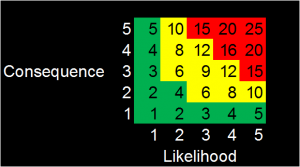ECSI is currently attending day one of the 2-day ISO 45001 US Technical Advisory Group (TAG) meeting in Washington DC January 15-16, 2014. We will be reviewing comments on the first working draft of the standard and then breaking into several working groups to revise specific sections of the standard. One of the key issues to be discussed will be how much additional discipline specific text should be added to the required High Level Structure (HSL) language. As a voting member of the US TAG I intend to advocate for a less-is-more approach. In other words, I believe that most of the discipline specific text (occupational health and safety in this case) should reside in the annex of the standard.
The HLS is designed to facilitate seamless integration of discipline specific management systems into an organizations overall business management system. In the past ISO standards had significantly different structures which made integration of the standards difficult. An example is ISO 14001 Environmental Management Systems (EMS) which has only 4 sections and ISO 9001 Quality Management Systems (QMS) which has 8 sections. The difference in the way the standards were organized lead to considerable confusion among many standard users who wondered why the structure of an EMS needed to be so different than a QMS.
In response to those concerns ISO created the HSL to standardize the way it writes standards which is a really good idea for a standards writing body. ISO requires that all new and revised standards follow the HLS with little deviation. My experience with the ongoing revision of ISO 14001 has been that trying to incorporate significant additional discipline specific language into the standard is not always value added and can sometimes diminish the clarity and usability of the standard. Because of the significant additional language in the ISO 14001 standard it seems overweight or bloated at 19 pages versus 9 pages for ISO 14001:2004. As we hash over this important issue I hope that both the US TAG and the international project committee PC 283 recognize this potential pitfall and endeavor to limit the amount of additional discipline specific language in the new ISO 45001.

![652px-Logo-ISO[1]](http://envcompsys.com/wp-content/uploads/2013/12/652px-Logo-ISO1-300x276.jpg)
